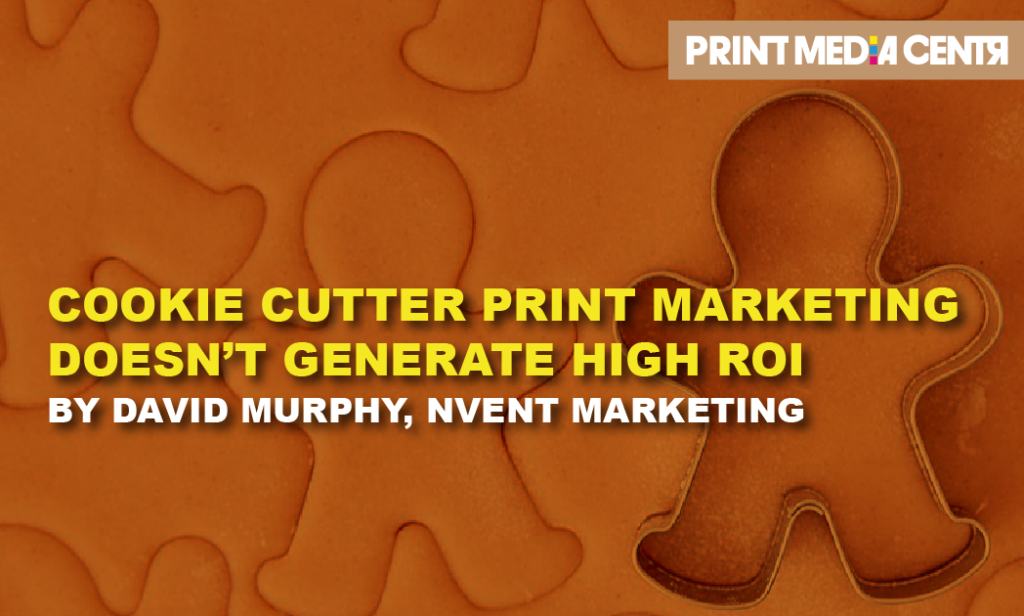
Print shop owner #1: “Lead generation is hard, expensive, time-consuming, and frustrating.” Print shop owner #2: “We are getting great ROI on our marketing, our customer base is growing, and we get new leads all the time.” Both these printers are doing the same thing. One is winning and the other is wasting.
Marketing ROI optimization is challenging. What strategy works for one printer may not work for another. Target audiences, product mix, value propositions, and competitive differentiations all combine to make each printer’s situation unique. So one best practice is to resist the temptation to copy your competitors’ marketing strategy. Too often, we see our competitor’s ad in a magazine so we may think we should also buy an ad. We see a competitor’s postcard mailer, email blast, or TikTok video and we figure we should be doing that. Not necessarily. Every situation is unique. To dial in the right marketing formula, there are certain things you can do today to begin driving new qualified print buyers to your door or to your website. Which one is right for you to prioritize?
1. Update your website with a new design every three years. Your website is the cornerstone of your brand marketing strategy and it must be fast, secure, mobile-responsive, and provide a great user experience. If your website was last designed in 2019, there’s a fair chance that it feels out of date in comparison to some of your new competitors’ sites.
2. Don’t underestimate the potential of pay-per-click advertising through Google search and display strategies. With PPC, you can target location-specific customer personas, track and measure analytics, and adjust your budget and timing as needed. Test, measure, iterate, prove, and scale.
3. Update and frequently maintain your Google Business Profile. Use this platform as an extension of your social media and content marketing strategy. Optimize your listing with photos, promotions, news, and product details. Keep your business information consistent across all your digital channels. Respond to customer questions and reviews. All these activities will contribute to your local ranking and Google search.
4. Use email marketing wisely. Be sure you have a quality permission-based database of customers and prospects. Offer relevant, easy-to-consume content, and include a compelling CTA.
5. Participate in local community events. Being active in your local market is good for both public relations and lead generation. Sponsor events and support charities to make connections with potential new influencers, referrals, and customers.
Of course, as stated above, some of these tactics will work better than others. Even if you think you know who your target audience is, what they want, where they shop, and why they buy from you, you may be wrong. It’s important to refresh your competitive market analysis, your customer/market research, and your marketing messaging strategy frequently – at least every three to four years. The worst thing you can do is treat your old, wrong, subjective opinions and assumptions as facts. The best thing you can do is to check your facts.
Use VideoObject markup to include details of your videos, like duration, thumbnail, and descriptions, Your videos must include a high-quality thumbnail. Either you provide one or let Google generate a thumbnail for you
- For live streaming videos, display the live badge on your video. Use BroadcastEvent structured data and the Indexing API to make the badge visible.
- Google suggests using Video Sitemaps. To test your sitemap, use the Search Console Sitemaps tool or Search Console API.
- Videos should start in minimum steps. Complex user actions make it difficult for Google to find your videos.
- Even if the videos that are embedded on your page use platforms like YouTube, Vimeo, or Facebook, you must provide structured data & make sure that these hosts permit Google to access your video file.
- You can also restrict your video based on the users’ location. If you use VideoObject structured data, then follow these steps.
Google selects a preview of your video to make it more engaging. To set the duration of the video preview, use the max-video-preview robots meta tag. The more presentable and easily accessible your video is to the user, the more engagement you’ll get. Google fetching your files makes this process easier for you.
##
Read David’s post from last month: https://printmediacentr.com/are-your-print-company-videos-optimized-for-search-engines
Read more from David here.
 David Murphy is the founder and CEO of Nvent Marketing, a marketing agency specializing in digital marketing for the print industry. David has 30+ years of experience in the graphics and document print production industry. He has served as a board member and advisor to print organizations and associations including Sustainable Green Printing Partnership (SGP), Print Industries of America (PIA), Association for Print Technologies (APTECH), and Electronic Document Scholarship Foundation (EDSF). David was also awarded the Idealliance Soderstrom Society Award for Print Industry Leadership. David can be reached at [email protected].
David Murphy is the founder and CEO of Nvent Marketing, a marketing agency specializing in digital marketing for the print industry. David has 30+ years of experience in the graphics and document print production industry. He has served as a board member and advisor to print organizations and associations including Sustainable Green Printing Partnership (SGP), Print Industries of America (PIA), Association for Print Technologies (APTECH), and Electronic Document Scholarship Foundation (EDSF). David was also awarded the Idealliance Soderstrom Society Award for Print Industry Leadership. David can be reached at [email protected].













